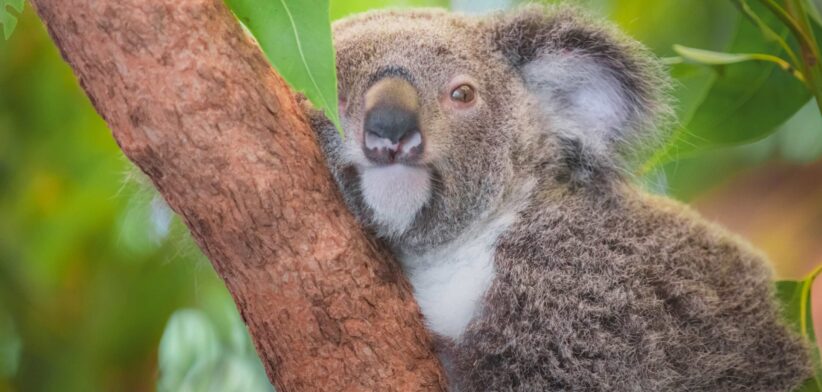Koalas can predict a coming summer scorcher and lower their body temperature in advance.
Researchers from the University of Sydney have observed free-ranging wild koalas regulating their body temperatures ahead of the hottest days of summer, by lowering their temperatures well below average during cooler morning conditions.
Research lead Dr Valentina Mella said this strongly suggested koalas predicted the hottest days from morning conditions and adjusted their core temperatures accordingly.
“We have never seen this type of behaviour before in koalas,” Dr Mella said.
The observations took place over two weeks in northwest New South Wales during the hottest time of the year in 2019.
Dr Mella said on the hottest day of the study the temperature was 40.8 degrees Celsius, which was same as the highest koala body temperature measured and the highest ever recorded for a koala.
“However, on the same morning, the lowest ever recorded temperature for a koala was also measured (32.4 degrees), suggesting the endangered species regulates its body temperature to a greater degree than previously thought.”
Dr Mella said this self-regulation required individual koalas to predict days of extreme temperature from overnight and early morning conditions and adjust their body heat regulation accordingly.
“Our results indicate that air temperature and koala body temperature are closely aligned. What surprised us was the self-regulating animals ‘allowed’ their core temperatures to fluctuate with environmental conditions, a possible adaptive tactic to reduce evaporative cooling, saving an estimated 18 percent of water,” Dr Mella said.
“It seems that this self-regulation of body temperature might play a more important role in surviving hotter days than known behavioural tactics, such as tree-hugging.”
She said koalas generally sought to maintain their core body temperature at 36.3 degrees, within a range of 2.4 degrees.
“On hot days, it seems an adaptive form of heat regulation – starting with a lower body temperature – provides scope for letting body heat rise with air temperature rather than attempting to keep temperature strictly in the normal range using water and other techniques to cool down,” Dr Mella said.
“However, as temperatures increase due to climate change more generally, this survival technique could become quite risky. Temperatures above 40 degrees can be fatal for leaf-eating mammals, like koalas.”
She said koalas had physiological and behavioural methods to self-manage body temperature, including their highly insulative fur, ability to produce concentrated urine to conserve water and their low metabolism, which reduced heat production.
“Further, koalas have also been observed panting and licking their fur to facilitate evaporative cooling. They also seek out cooler microhabitats and can adopt tree-hugging postures to promote heat exchange with cooler trees.”








